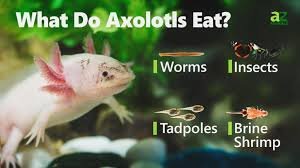
Dairy Cow Isopods
In the vast world of livestock parasites, dairy cow isopods stand out as a fascinating yet often overlooked group. These crustacean parasites can have significant impacts on dairy cow health and productivity. Understanding their biology, life cycle, effects, and management is essential for farmers and veterinarians aiming to protect their herds.
This article delves into everything you need to know about dairy cow isopods—from what they are, to how they affect cows, and practical advice on prevention and treatment.
What Are Dairy Cow Isopods?
Isopods are a type of crustacean closely related to shrimp and crabs. While many isopods are harmless or even beneficial in aquatic environments, some species have adapted to live as parasites on mammals, including dairy cows.
The species most relevant to dairy farming is Cymothoa exigua, though others like Lironeca ovalis are also studied for their parasitic relationships with livestock. These isopods typically inhabit areas around the cow’s skin, ears, or body, feeding on tissues or blood.
Physical Characteristics of Dairy Cow Isopods
Isopods have a hard, segmented exoskeleton and multiple legs that help them cling to their hosts. They range in size but can be up to several centimeters long. Their flattened bodies allow them to hide in crevices and under the cow’s skin folds.
Unlike ticks or fleas, isopods have a more crab-like appearance and can be identified by their segmented bodies and antennae. Understanding their physical traits helps in proper identification and timely intervention.
Life Cycle and Behavior
The life cycle of dairy cow isopods is complex and includes several developmental stages: egg, larva, juvenile, and adult. Females lay eggs which hatch into free-swimming larvae that seek out a host.
Once they attach to a cow, they feed and grow, sometimes causing irritation or secondary infections. Isopods tend to prefer warm, moist environments, which makes some dairy farming conditions more susceptible to infestation.
Effects on Dairy Cows
Isopods are parasitic and can cause various health issues in dairy cows, including:
- Skin irritation and lesions: Their attachment and feeding cause wounds.
- Secondary infections: Open wounds can lead to bacterial or fungal infections.
- Stress and discomfort: Parasite presence stresses animals, potentially reducing milk production.
- Potential weight loss: Due to discomfort or infection, cows may eat less.
While not usually life-threatening, infestations require prompt management to avoid economic losses.
Detection and Diagnosis
Detecting isopods can be challenging due to their small size and hiding behavior. Common signs include scratching, head shaking, and visible lesions on the skin or ears.
Regular physical examinations, especially in humid or warm seasons, are critical. Veterinarians may use magnification tools or skin scrapings to confirm their presence.
Treatment and Management
Effective management of dairy cow isopods includes:
- Regular cleaning and inspection: Keeping cows clean reduces parasite habitat.
- Use of approved insecticides and parasiticides: Consult a veterinarian for safe treatments.
- Environmental control: Managing moisture and removing contaminated bedding can lower infestation risks.
- Quarantine new animals: Prevent introducing parasites to the herd.
Proper treatment not only eliminates isopods but also prevents re-infestation.
Preventive Measures
Prevention is always better than treatment. Dairy farmers can take these steps:
- Maintain good hygiene and sanitation in barns and pastures.
- Use parasite control programs advised by veterinary professionals.
- Ensure proper nutrition to boost cows’ immune systems.
- Monitor herd health regularly to catch infestations early.
By adopting integrated parasite management, farmers can safeguard their cows’ health and milk productivity.
Impact on Dairy Industry
While not as famous as ticks or lice, dairy cow isopods can have hidden economic impacts by reducing milk yield and increasing veterinary costs. Awareness and education among farmers and veterinarians are key to managing these parasites effectively.
Research continues into better understanding their behavior and developing innovative treatments.
Conclusion
Dairy cow isopods, though less well-known than other parasites, can affect cow health and farm profitability. Recognizing their presence, understanding their life cycle, and applying effective control measures are vital steps for any dairy operation.
If you want healthy, productive dairy cows, monitoring for isopods should be part of your comprehensive parasite management strategy.






